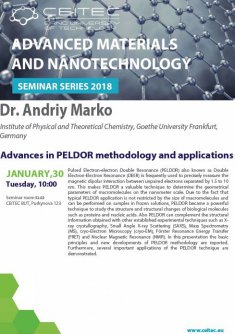ABSTRACT:
Pulsed Electron-electron Double Resonance (PELDOR) also known as Double Electron-Electron Resonance (DEER) is frequently used to precisely measure the magnetic dipolar interaction between unpaired electrons separated by 1.5 to 10 nm. This makes PELDOR a valuable technique to determine the geometrical parameters of macromolecules on the nanometer scale. Due to the fact that typical PELDOR application is not restricted by the size of macromolecules and can be performed on samples in frozen solutions, PELDOR became a powerful technique to study the structure and structural changes of biological molecules such as proteins and nucleic acids. Also, PELDOR can complement the structural information obtained with other established experimental techniques such as X-ray crystallography, Small Angle X-ray Scattering (SAXS), Mass Spectrometry (MS), cryo-Electron Microscopy (cryo-EM), Förster Resonance Energy Transfer (FRET) and Nuclear Magnetic Resonance (NMR). In this presentation, the basic principles and new developments of the PELDOR methodology are reported. Furthermore, several important applications of the PELDOR technique are demonstrated.








